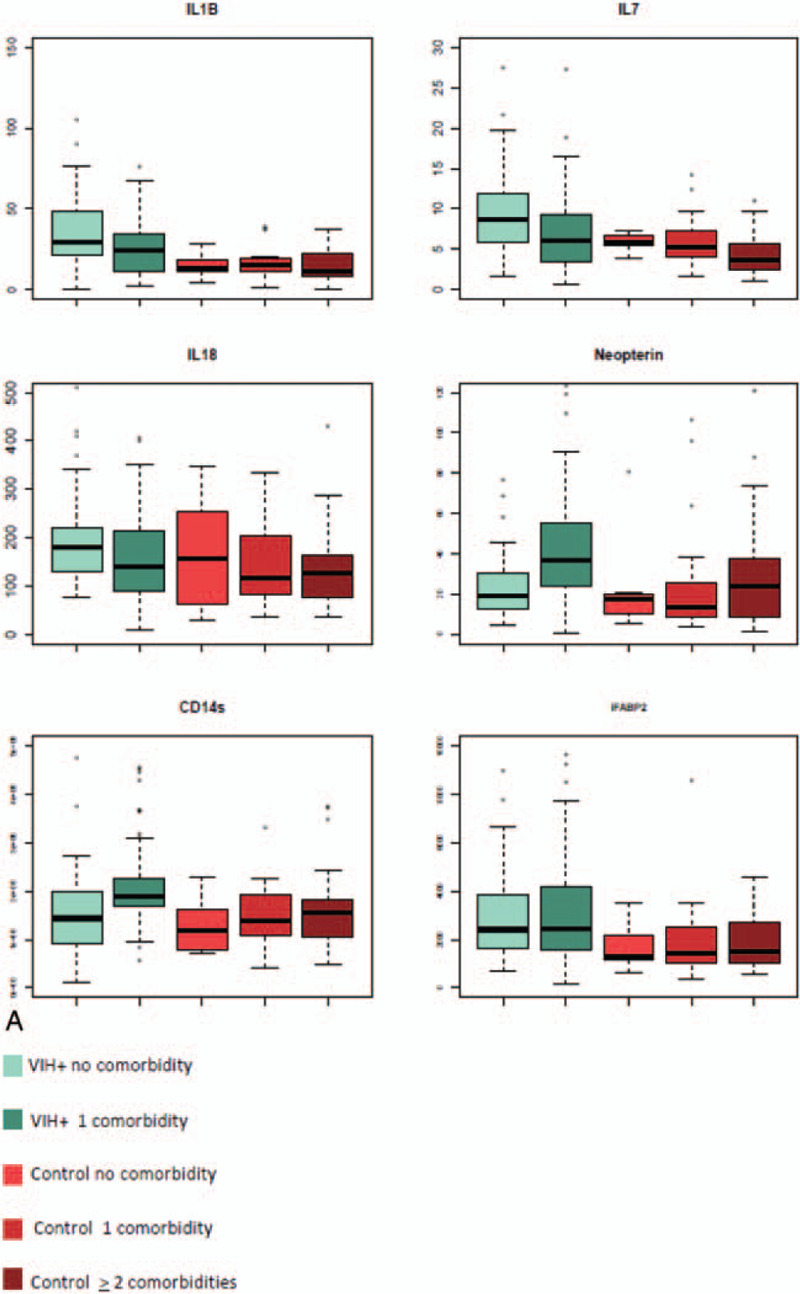Figure 1.

(A) Plasmatic level of inflammatory molecules: Distribution of elevated biomarkers in the HIV-infected group (with 1 [n = 72] or without comorbidity [n = 39] compared to the control group without [n = 7], with 1 [n = 23], and with >1 comorbidity [n = 33]). (B) Plasmatic level of inflammatory molecules: distribution of decreased biomarkers in the HIV-infected group (with 1 [n = 72] or without comorbidity [n = 39] compared to the control group (without [n = 7], with 1 [n = 23] and with >1 comorbidity [n = 33]). (C) Plasmatic level of inflammatory molecules: Distribution of biomarkers for which the level is equivalent in HIV-infected patients compared to healthy elderly controls. (D) Scatter plot of a 2 components of principal component analysis (PCA) identifying the degree of variance of the predicted variable (infection) explained by the 29 biomarkers measured and tested variables in regularized logistic regression. (E) PCA on the 29 biomarkers carried out in HIV-infected patients to identify clusters of patients with comorbidity or type of comorbidity. iFABP2 = intestinal fatty acid binding protein 2, IFN-γ = interferon Gamma, IL-1b = interleukin-1beta, IL-1RA = interleukin-1 receptor antagonist, LAP = latency associate peptide, MCP-1 = monocyte chemoattractant protein-1, MPO = myeloperoxydase, NF-L = neurofilament light chain, SAA = serum amyloid A, sCD14 = soluble CD14, TNFR1 = tumor necrosis factor receptor 1, TNFR2 = tumor necrosis factor receptor 2, usCRP = ultra sensitivity C-reactive protein.
